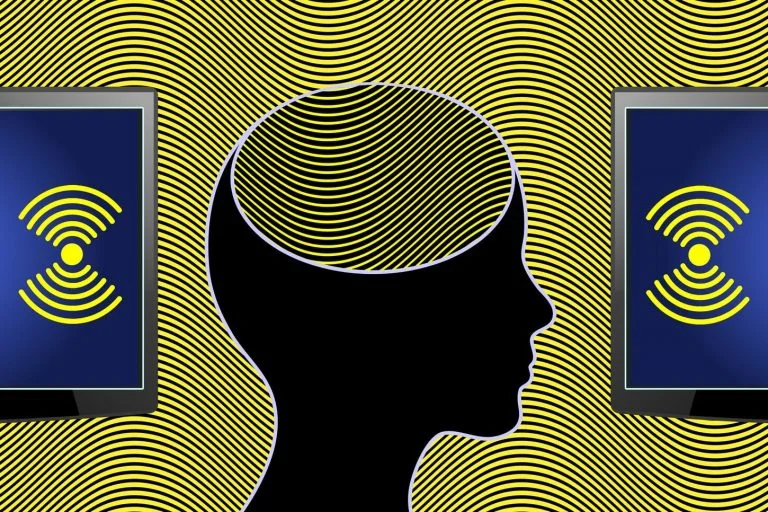Now more than ever, Lyme disease is becoming a fairly common ailment and has the potential to affect anyone. Global temperatures are speculated to be rising in general but the warmer months of the year specifically pose the greatest risk for people to be infected with Lyme. Most countries around the world and all states in the USA have reported cases of the disease.
While the concerns around Lyme have previously been focused on people’s interaction with the natural world, there are growing concerns around a less natural factor as a potential driver for the debilitating effects of this disease – electromagnetic frequencies (EMFs).
In this blog, we will explore the link between Lyme disease, and EMFs and what we can do to move forward.


What is Lyme Disease?
Lyme disease is a tick-borne illness caused by the bacterium Borrelia Burgdorferi.
Immature deer ticks, called nymphs, are the most common vectors for this disease; nymphs are typically about the size of a pinhead. Nymphs pick up bacteria when they feed on small rodents, such as mice, infected with B burgdorferiIt can cause a range of symptoms, including fever, headache, fatigue, and a characteristic skin rash.
While Lyme disease is often treated with antibiotics, many people experience ongoing symptoms throughout and after treatment.
EMFs and Lyme Disease
There is ongoing research into the possible causes of persistent Lyme disease symptoms. A relatively new area of interest is the role of electromagnetic fields (EMFs) and electromagnetic hypersensitivity (EHS) and how these two factors can exacerbate the debilitating symptoms of Lyme.
EMFs are a type of radiation produced by electronic devices such as cell phones, Wi-Fi routers, and power lines. While EMFs have been generally considered safe at low levels in the past, it is gradually being discovered that a growing percentage of the population may be more sensitive to these frequencies than others. There is a growing amount of evidence to suggest that exposure to EMFs may worsen Lyme disease symptoms or contribute to the development of persistent symptoms.


One study published in the National Library of Medicine found that exposure to EMFs can cause oxidative stress in cells infected with Borrelia burgdorferi, potentially leading to increased inflammation and tissue damage. Another study found that exposure to EMFs can cause changes in the immune system that may make it harder for the body to fight off Lyme disease.
Another important factor is the the blood-brain barrier (BBB) – this is a protective barrier that separates the brain from the bloodstream. It helps prevent harmful substances from entering the brain and protects it from infection. However, some studies such as this one have suggested that exposure to EMFs may disrupt the BBB, potentially allowing harmful substances to enter the brain and cause damage.
For instance, this study found that exposure to EMFs can cause changes in the BBB that may contribute to the development of neurodegenerative diseases. Other research such as this study have suggested that exposure to EMFs may increase the permeability of the BBB, potentially allowing Lyme disease bacteria to enter the brain and cause neurological symptoms.
On the flipside, it’s important to recognize that EHS – Electromagnetic hypersensitivity (EHS) is a condition in which people experience a range of symptoms, including headache, fatigue, and dizziness, when exposed to EMFs. While EHS is not recognized as a medical condition by most mainstream medical organizations in the United States, some people with Lyme disease may be more sensitive to EMFs and experience EHS-like symptoms as a result. Furthermore, many people have recognized how the symptoms of EHS and Lyme Disease are almost identical.
One study published in the Journal of Environ Health found that people with Lyme disease were more likely to report EHS symptoms than healthy controls. Another study found that exposure to EMFs can cause changes in the brain that may contribute to the development of EHS.
Closing Thoughts
It’s important to recognize that more research is needed to fully understand the relationship between EMFs, EHS, and Lyme disease, but there are some steps people with Lyme disease can take to reduce their exposure to EMFs. These include:
- Using the one-of-a-kind EMF protection solutions from Aires Tech
- Avoiding the use of cell phones and other electronic devices as much as possible
- Using wired internet connections instead of Wi-Fi
- Avoiding living near power lines or other sources of high EMF radiation
- Using shielding devices, such as EMF-blocking clothing
It’s important to note that these steps may not be necessary or effective for everyone, and people with Lyme disease should consult with their healthcare provider before making any changes to their treatment or lifestyle.
Related Posts
- Awkward Family Photos Founder Mike Bender’s Unique Story of Electrohypersensitivity
- ‘The Quiet House’ : A Lesson on EHS and Invisible Stressors
- Electromagnetic Hypersensitivity (EHS)
- Too much EMF Radiation Exposure? Symptoms and Solutions
Updated February 29th, 2024







